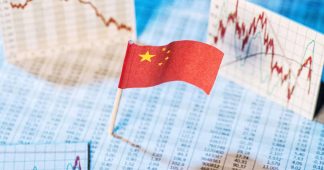by Lyu Hui
May 22, 2022
Facing the highly transmissible Omicron variant, China is sticking with a dynamic zero-COVID policy when most other countries have eased restrictions and shifted towards living with the virus.
Some overseas media question the sustainability of the dynamic zero-COVID approach, citing the high social and economic cost.
However, China is determined to contain the virus while maintaining economic growth. This strategy stems from a deep care for the vulnerable, a strong belief in the people’s strength and resilience, and unswerving faith in the country’s future.
The dynamic zero-COVID approach suits that goal best.
Safeguarding people’s health
Since the outbreak of COVID-19, China has always put the people and their lives first. China’s dynamic zero-COVID policy is not aimed at realizing zero infection, but rather at bringing COVID-19 under control at the minimum social cost in the shortest time possible so as to effectively protect the health, normal life and production of the Chinese people to the maximum.
The relaxation of epidemic control and prevention is not suitable for the world’s most populous country, home to 267 million elderly people aged 60 and above and 260 million people with underlying health conditions, currently vaccination rates for elderly and children are not high enough.
Moreover, with unbalanced regional development as well as insufficient medical resources, China would see widespread infections with a huge amount of severe cases and deaths if the strict virus control measures were loosened prematurely.
“If we are not firm about the dynamic zero-COVID policy, China may miss the best time to stem the resurgence of cases, which may lead to higher costs and unbearable consequences,” China’s leading epidemiologist Liang Wannian recently said.
If China abandons the current dynamic zero-COVID policy, China could face more than 1.5 million COVID-19 deaths, a study published in Nature Medicine concludes.
According to another study published in Lancet, the persistence of dynamic zero COVID-19 community transmission in Shanghai and other regions will overcome weak links in the immunological barrier in populations across the country.
“When you look at the world, we can say that China’s method is more suitable when considering public health,” Bulent Ertugrul, an expert from Reyap Hospital in Istanbul, told Xinhua, noting that the dynamic zero-COVID approach has proved a significant success in China.
Since March this year, China has withstood the most severe challenge on COVID-19 control and prevention since the anti-epidemic battle of Wuhan in early 2020, as sporadic resurgences of domestic cases erupted in many regions across China.
Thanks to the zero-COVID policy of mass testing, quarantine, temporary lockdowns, and closed-off management, the current wave of epidemic has steadily shown signs of improvement.
China’s financial hub Shanghai has cut off the community transmission of COVID-19 in all of its 16 districts and is seeing more factories return to normal operations and businesses reopen.
Ensuring economic development
It is inevitable that the stringent anti-epidemic measures will cause short-term economic pains, but the claims that anti-epidemic control and prevention measures will stifle the growth of the world’s second-largest economy is shortsighted.
Dynamic zero-COVID does not run counter to economic development, rather it is a counter-epidemic policy that ensures economic growth in the long run.
More than two years into the pandemic, China has made strenuous efforts to strike a balance between epidemic response and economic development.
By adhering to the dynamic zero-COVID policy, China was among the first countries to bring the epidemic under control and return to positive growth in 2020 and logged a growth rate of 8.1 percent in 2021.
As a result of a precise reaction to the virus and a slew of pro-growth policies, China’s economy is off to a steady start this year, with its GDP up 4.8 percent year on year in the first three months.
“The fundamentals of the Chinese economy remain unchanged. The overall trends of economic transformation and upgrading and high-quality development remain unchanged,” said Fu Linghui, spokesperson for the National Bureau of Statistics (NBS).
Although some indicators saw contractions in April, China’s economy is expected to improve in the following months with the accelerating resumption of work and production in Shanghai and some other regions.
“With the epidemic coming under control and production and people’s lives returning to normal, the pent-up consumption will be gradually released,” Fu said.
China remains a hotspot for foreign investors seeking predictable market opportunities at a difficult time amid the COVID-19 pandemic.
Foreign direct investment into the Chinese mainland, in actual use, expanded 25.6 percent year on year to 379.87 billion yuan in the first quarter of the year, according to the Ministry of Commerce.
As Bloomberg has analyzed, over the past two years, China’s anti-pandemic policy “has prevented a huge number of deaths at home and ensured that everything from iPhones and Teslas to fertilizer and car parts continues to flow to the rest of the world.”
“The epidemic’s impact is temporary and short-lived, and the economy will soon be back on track under efficient coordination between epidemic containment and economic development,” said Zhao Chenxin, deputy director of the National Development and Reform Commission.
Unremitting control efforts
The global COVID-19 pandemic situation is still severe and full of uncertainties, since the virus has been constantly mutating and it is possible for even more dangerous variants to emerge.
At the onset of the year, many countries and regions eased their COVID-19 restrictions, only to see caseloads and death tolls skyrocket.
So far, global COVID-19 death toll has reached 6.26 million, according to Johns Hopkins University’s dashboard.
The death toll from the pandemic has surpassed 1 million in the U.S., highest in the world. And it also has the world’s highest number of infections at 82 million.
The appalling figures remind people of the arduous nature of the battle against the pandemic and the consequences of easing control measures.
As a developing country with a population of 1.4 billion, China has managed to keep the COVID-19 infection and mortality rates lowest in the world, a clear vindication of the effectiveness of China’s zero-COVID policy.
The pandemic is far from over, the dynamic zero-COVID approach has helped ensure people’s health and underpin steady economic development. It has proven to be the best choice so far, why would China give up?
We remind our readers that publication of articles on our site does not mean that we agree with what is written. Our policy is to publish anything which we consider of interest, so as to assist our readers in forming their opinions. Sometimes we even publish articles with which we totally disagree, since we believe it is important for our readers to be informed on as wide a spectrum of views as possible.











